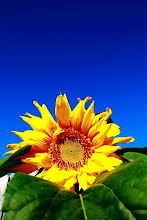I'm always searching for dark skies, it's a necessary ingredient for astro time-lapse.
Most of the great astro time-lapses are shot in the dark corners of the planet.
Here in the United States that usually means the southwest.
Unfortunately, I live in Florida which has light pollution everywhere.
I shot a Moonset last May with some success.
A few weeks ago I had the chance to shoot part of the Milky Way
on a no Moon night in northern Virginia.
I did not have complete darkness, the lights from Dulles International Airport
were glowing in the distance.
Most of the great astro time-lapses are shot in the dark corners of the planet.
Here in the United States that usually means the southwest.
Unfortunately, I live in Florida which has light pollution everywhere.
I shot a Moonset last May with some success.
A few weeks ago I had the chance to shoot part of the Milky Way
on a no Moon night in northern Virginia.
I did not have complete darkness, the lights from Dulles International Airport
were glowing in the distance.
I shot the time-lapse and stills with a Canon Rebel T4i (650D) with an EFS 17-55 2.8
ISO1600, 30 second exposures at 2.8 with a 2 second interval.
I used a Neweer RS-60E3 intervalometer.











Quick question, how did you avoid the noise coming from a 30 second exposure ?
ReplyDeleteI didn't, the camera was set for iso 1600, it's that clean.
ReplyDeleteYou could use the "custom function" noise reduction feature but it takes time to process.
Too long for shooting a time-lapse.
The images I shot for this time-lapse were right out of the camera with no processing.
Amazing how far the cameras have come.
how much was the lens?
ReplyDelete$1000, but it is the best EFS lens Canon makes.
ReplyDelete